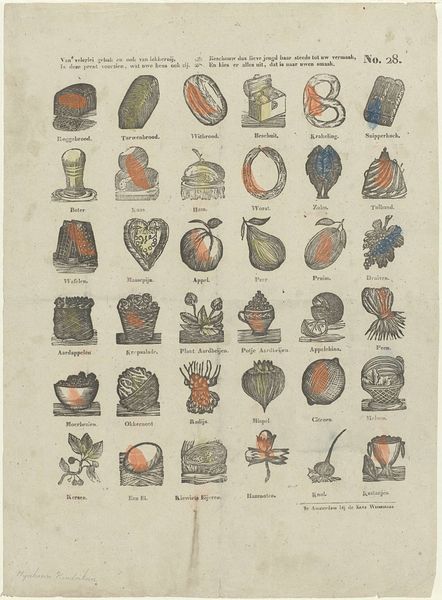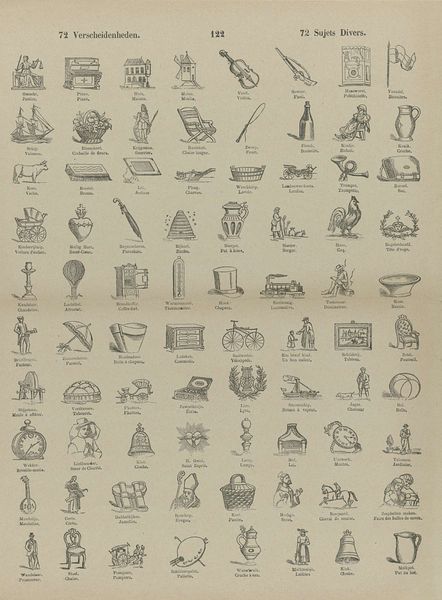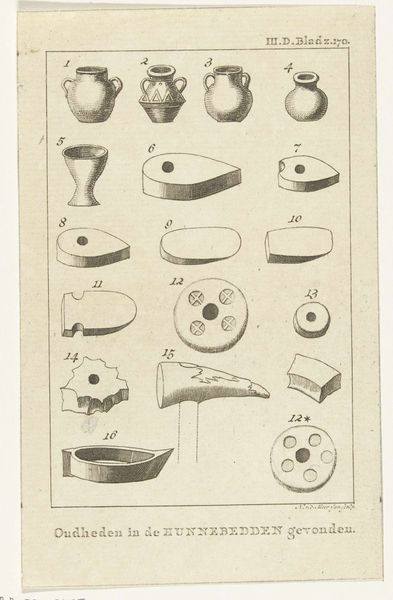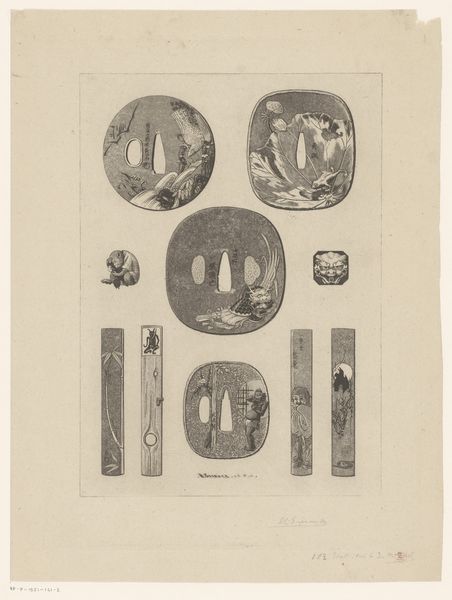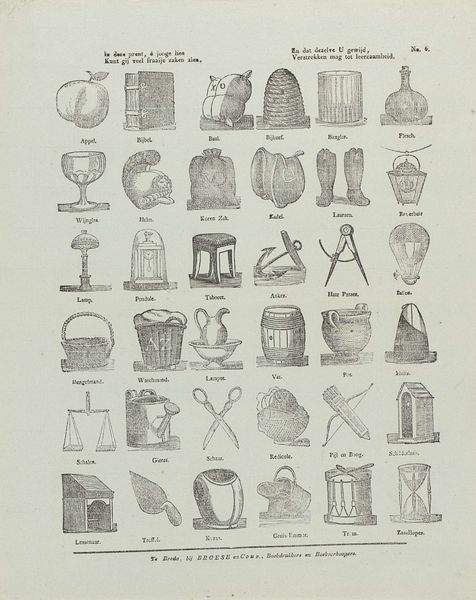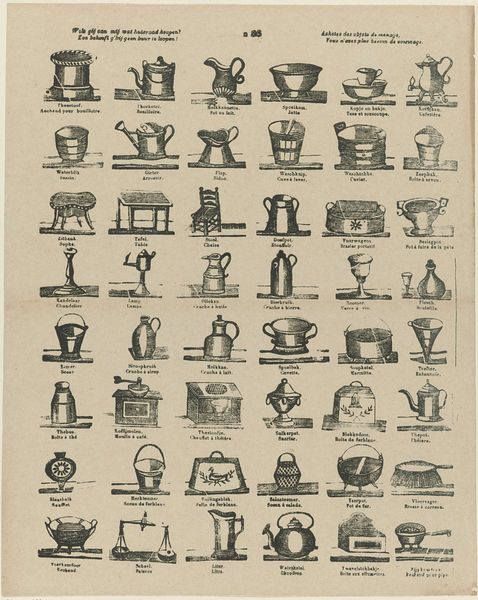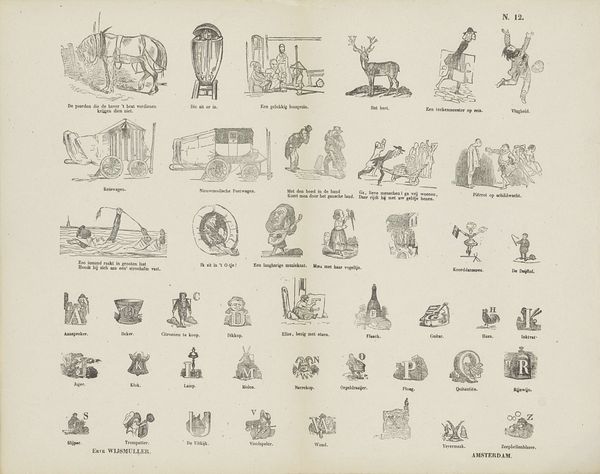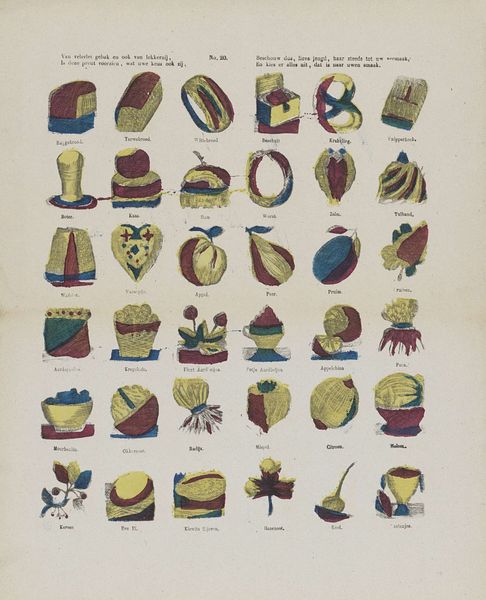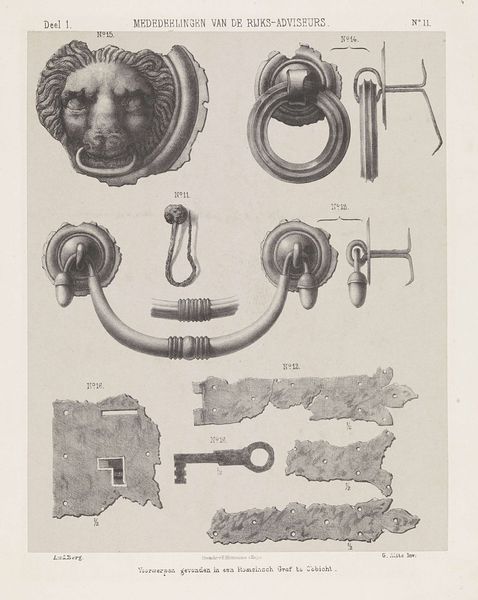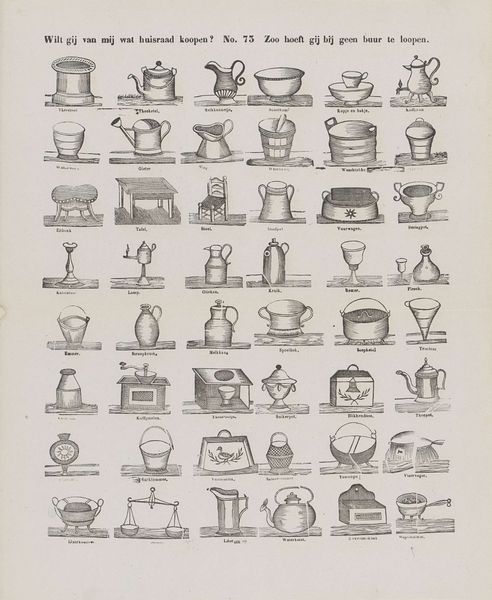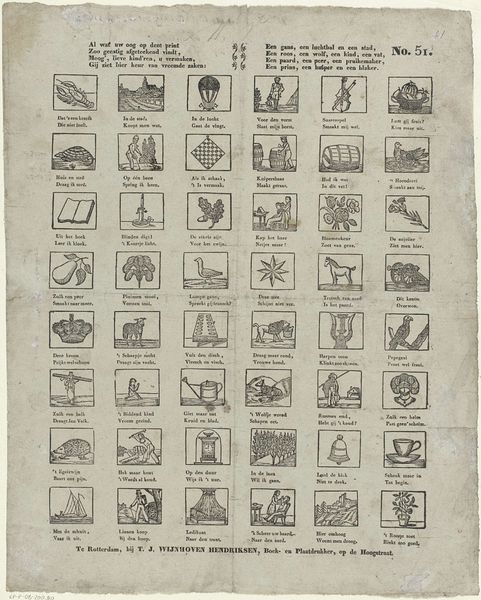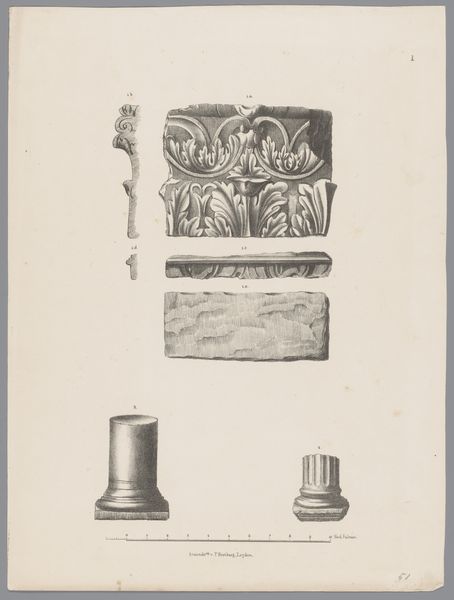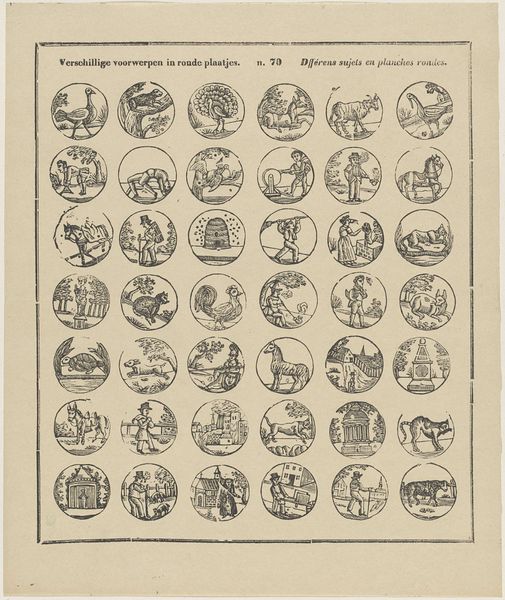
Kind'ren ziet dit zijn geen prullen, / Maar dingen om eens regt te smullen. / Hebt gij wel ooit een prent gehad / die zoo veel lekkernij bevat? 1819 - 1840
0:00
0:00
print, engraving
#
dutch-golden-age
# print
#
old engraving style
#
personal sketchbook
#
fruit
#
sketchbook drawing
#
watercolour illustration
#
genre-painting
#
engraving
Dimensions: height 405 mm, width 326 mm
Copyright: Rijks Museum: Open Domain
Editor: Here we have a print titled "Kind'ren ziet dit zijn geen prullen…," dating from between 1819 and 1840, and created by Alexander Cranendoncq. It seems to be an engraving of various food items. I'm struck by the sheer abundance depicted, but I wonder, what’s the story behind all these illustrations? How do you interpret this work? Curator: Well, it’s crucial to understand the context in which this print was created. Think about early 19th-century Dutch society, with its complex class structures. This image, overflowing with edibles, was intended for children. Doesn’t that say something about societal values and maybe even social disparities at the time? Editor: It’s like… are they trying to educate kids about food, or show off what they *could* have? Curator: Precisely. It reflects a didactic purpose – the artist explicitly says in the print, ‘children, these are not trinkets/ trifles / toys/ useless things, but items worth enjoying.” Also, gender might play a role here; consider who would be educating the children at that time, and what messages about abundance they might have wanted to convey. Who has access to this knowledge, and what does that signify? What values does this print teach the children, explicitly or implicitly? Editor: So, this isn't just a random assortment of food. It's communicating ideas about social roles and expectations. Curator: Absolutely. Consider how food is presented, what each individual fruit of vegetable stands for. And that Dutch Golden Age influence reminds us to ask - for whom was this abundance? This piece pushes us to think about what and whose story is being told through these carefully selected foods. Editor: I didn’t think about it like that at all. I was focused on the images themselves, not the layers of meaning they carry. Curator: Exactly! That's the beauty of art history. Every piece is a reflection of its time and the power structures within it. I've enjoyed our conversation – thank you! Editor: Thank you; this gives me much to consider!
Comments
No comments
Be the first to comment and join the conversation on the ultimate creative platform.
